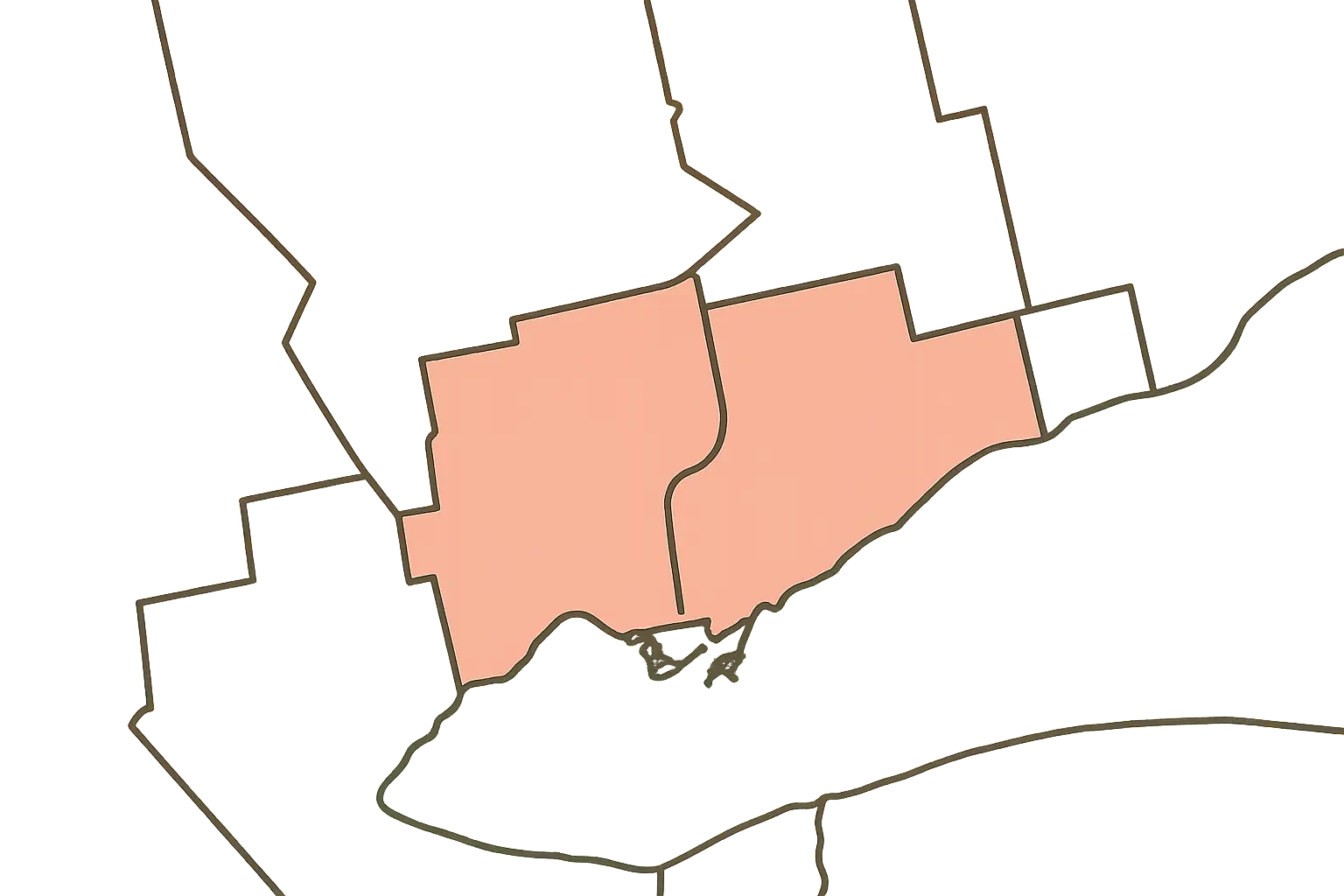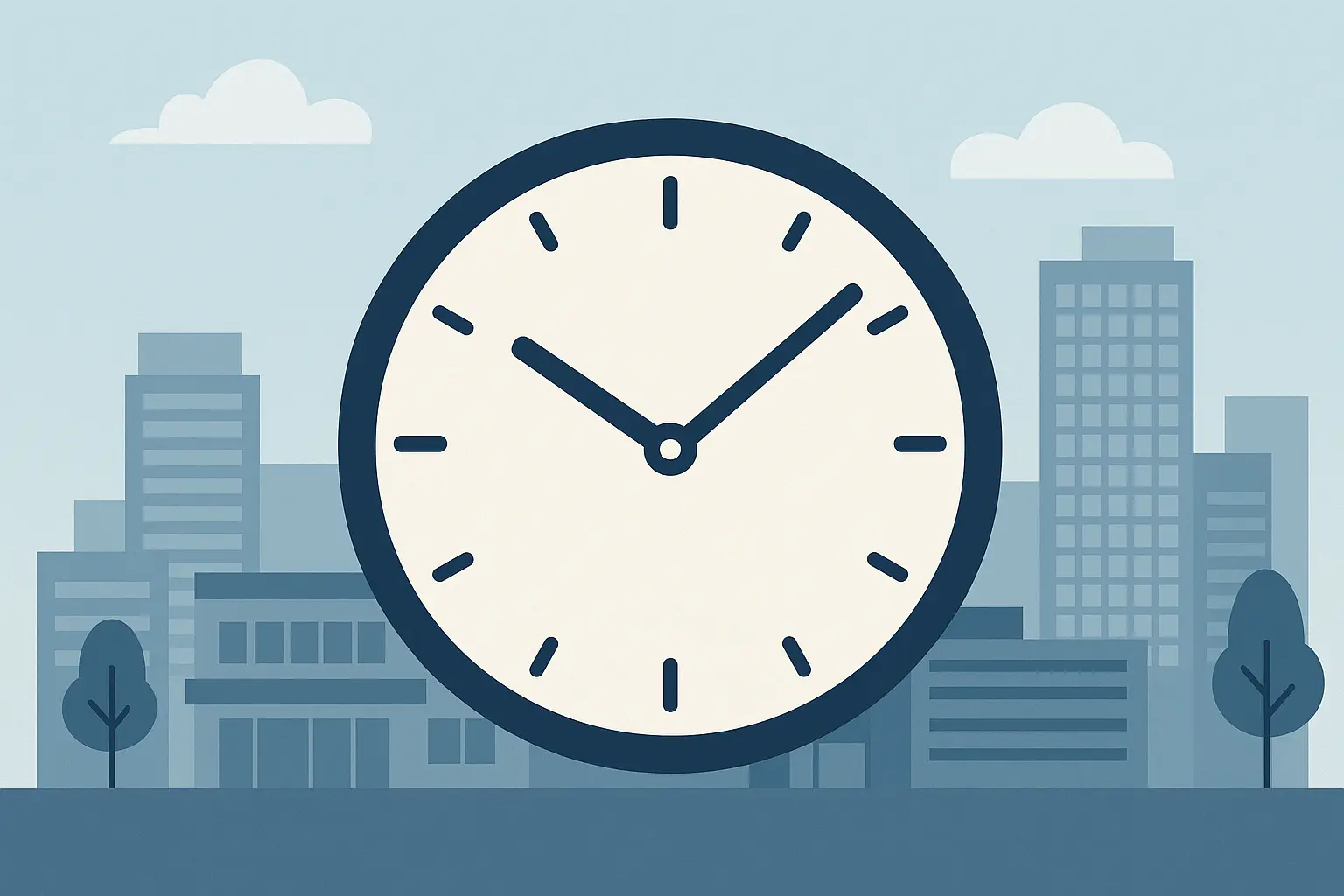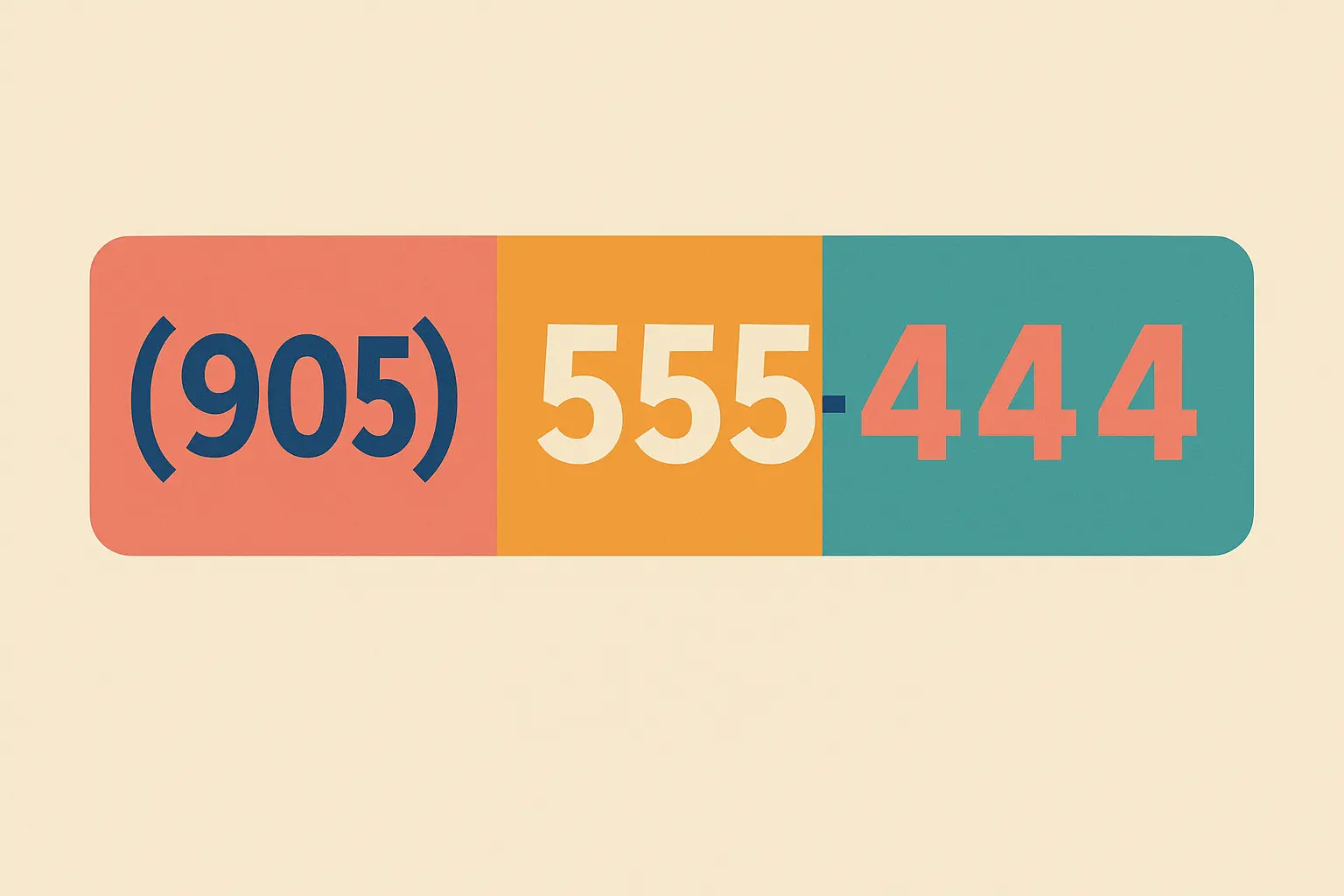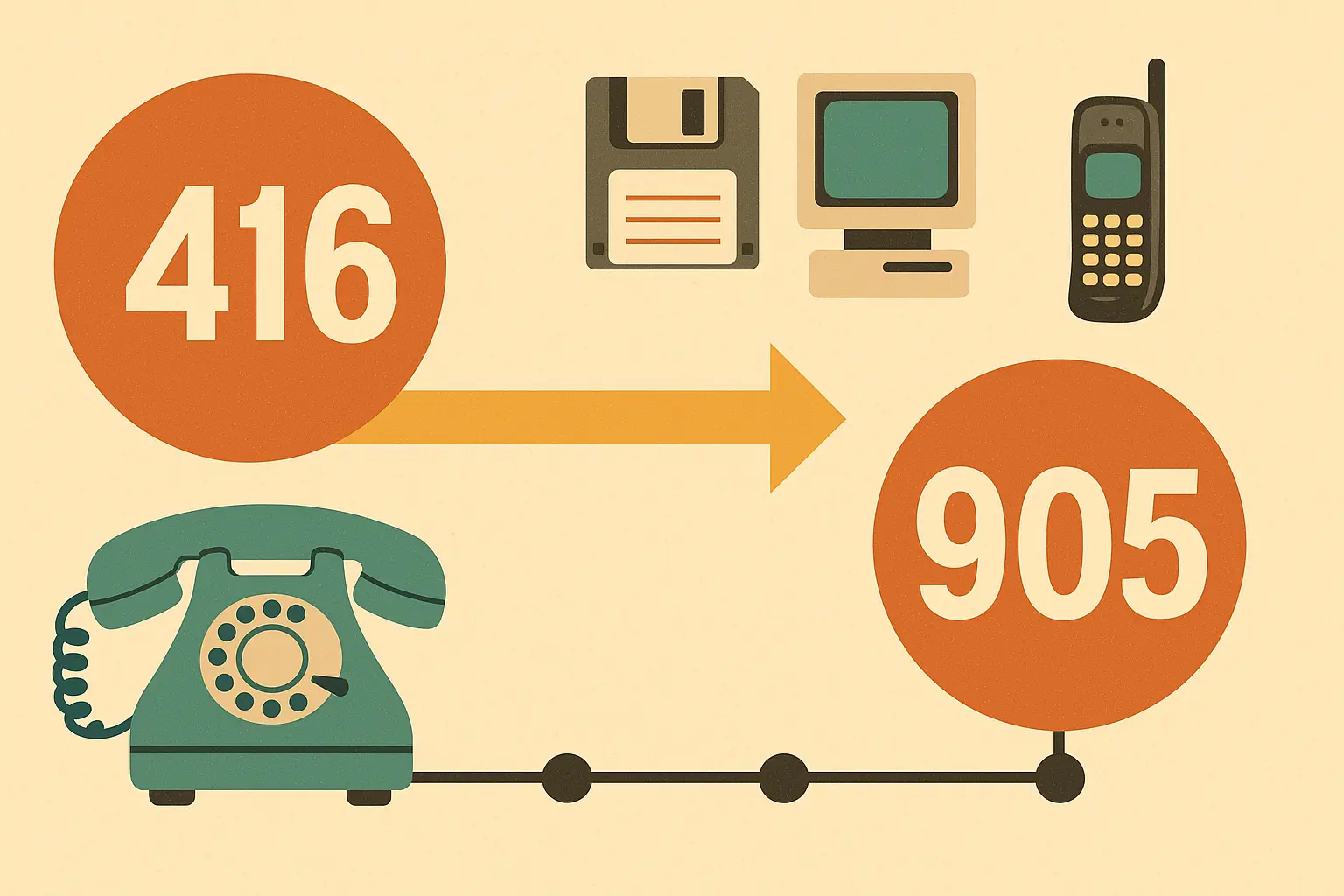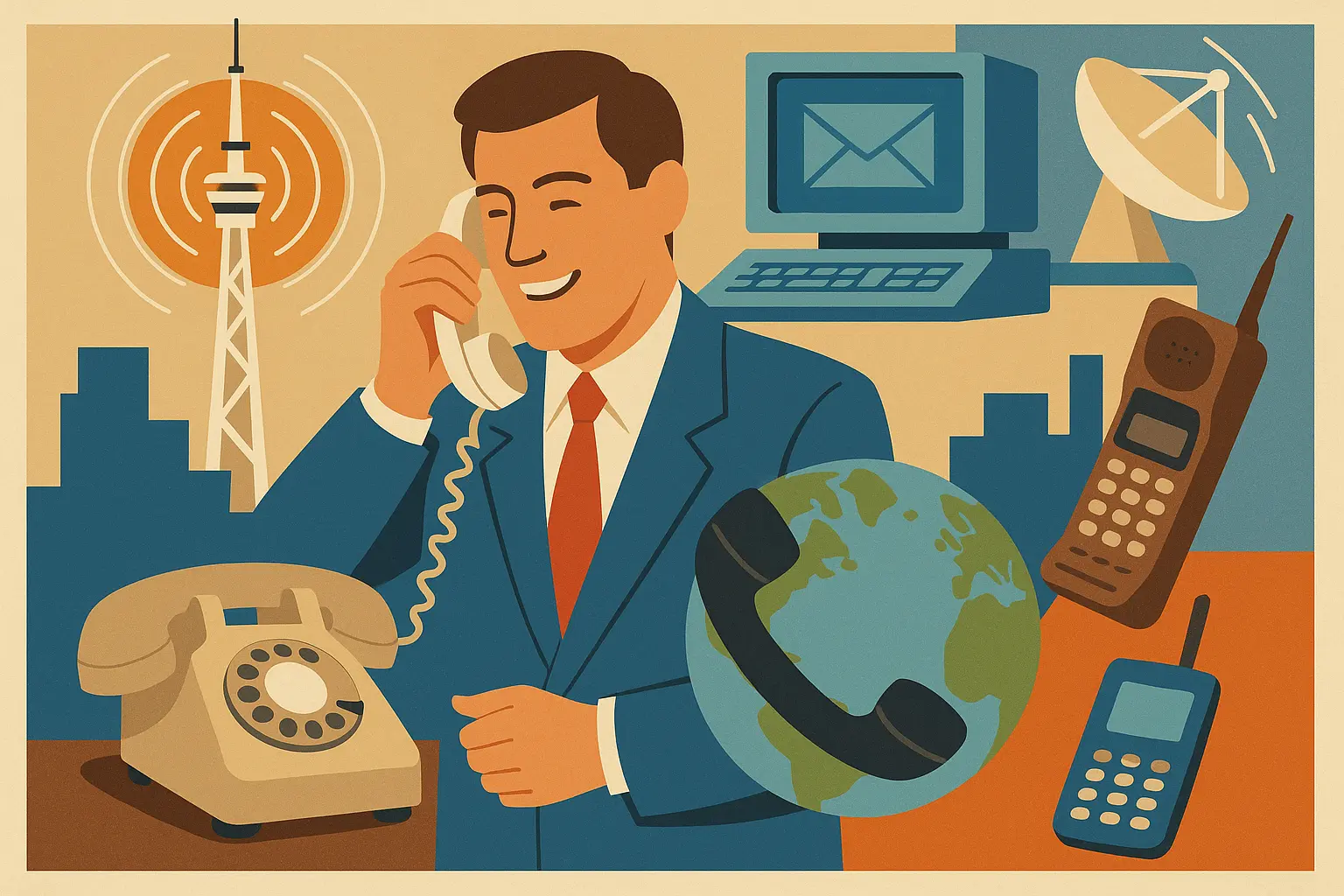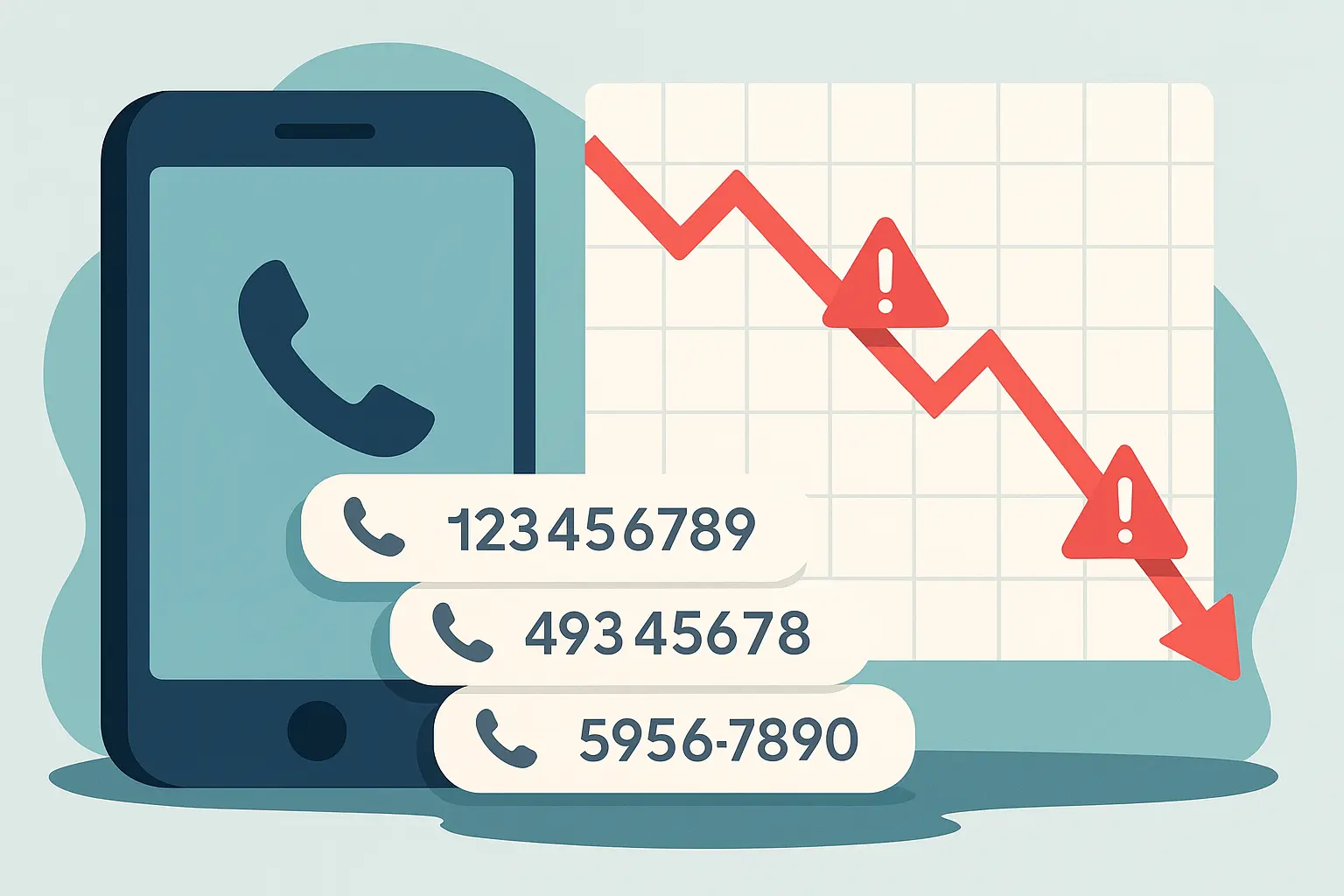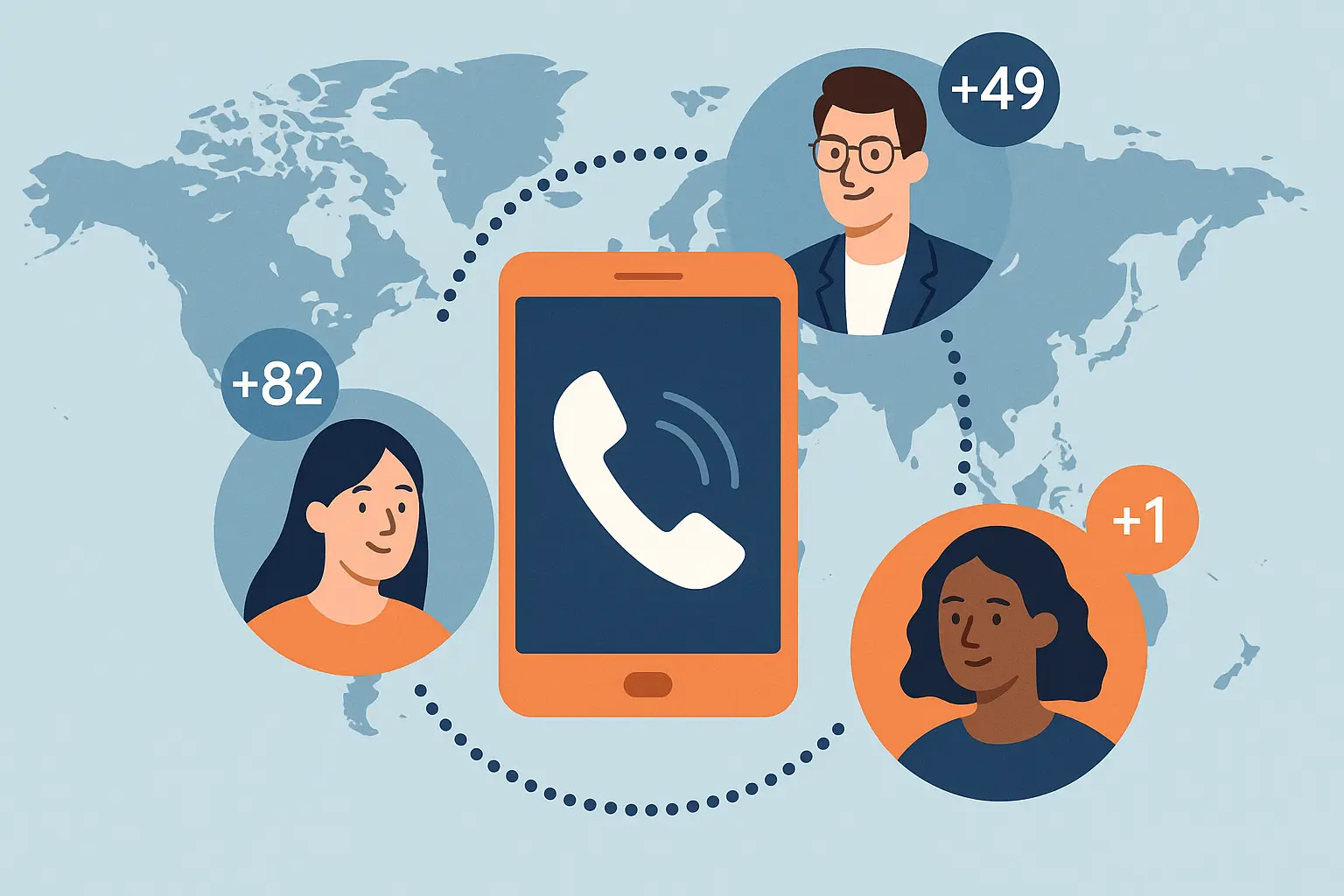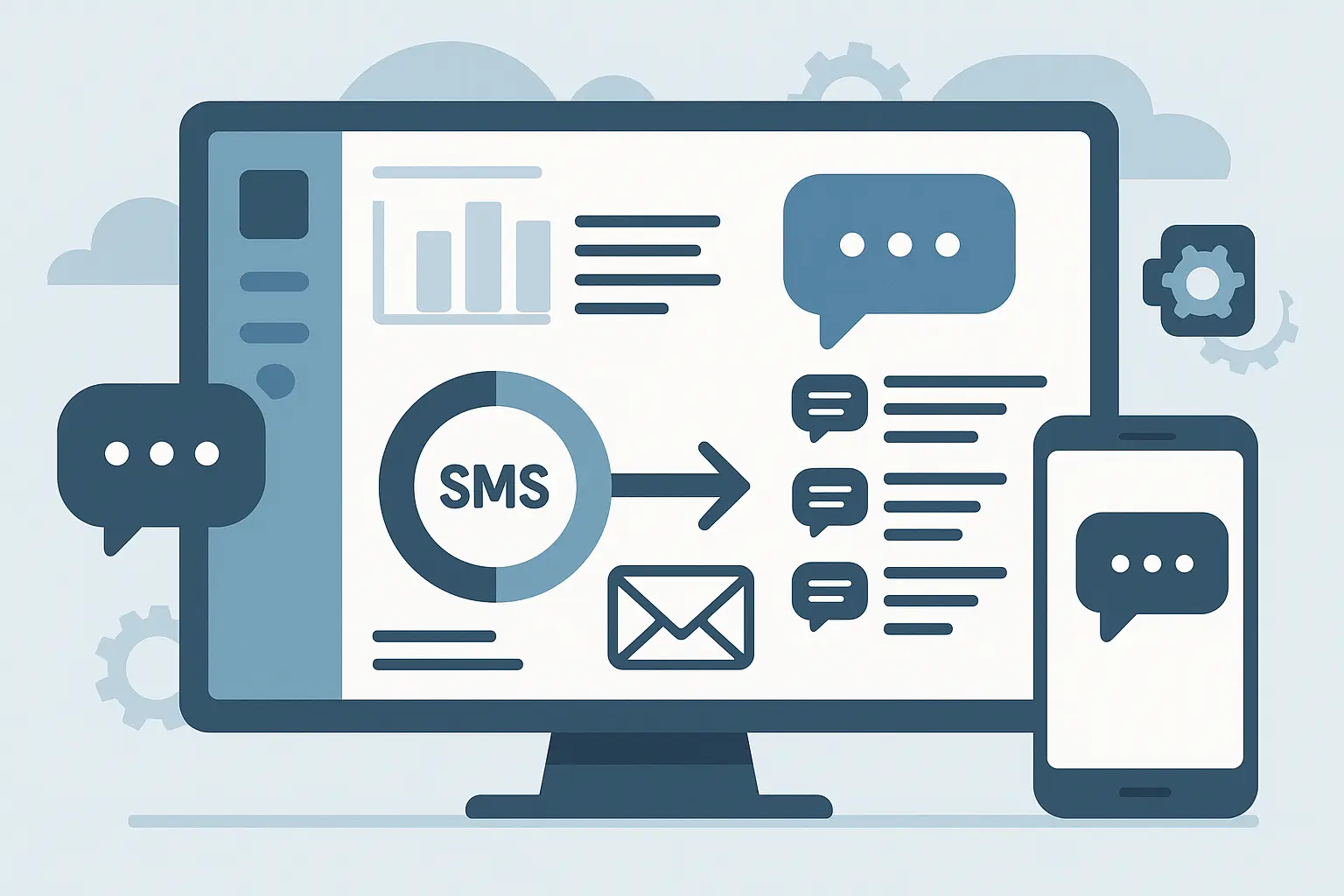After eight years in Mississauga, I still get that look when I tell downtown Toronto friends where I live. You know the one—like I’ve betrayed the city by moving to “the suburbs.” But here’s what most people don’t realize: the 905 isn’t just Toronto’s sleepy bedroom community anymore.
This area code covers over 3 million people across some of Canada’s fastest-growing cities. And if you think that’s just a boring statistic, you haven’t tried getting a dinner reservation in Markham on a Friday night or watched a single-family home in Oakville sell for $1.2 million in three days.
The 905 was born in 1993 when the original 416 area code couldn’t handle the explosion of suburban growth, fax machines, and early cell phones. What started as a telecommunications fix became the identity of an entire region—one that’s now facing its own capacity crisis.
Table of Contents
The Geography Gets Complicated Fast
When people ask me what the 905 covers, I usually start with the obvious places: Mississauga, Brampton, Hamilton, Markham. But the boundaries get weird pretty quickly.
Take Hamilton, for instance. Most people think of it as its own thing, but it’s firmly in 905 territory. Drive east from Hamilton toward Toronto, and you’ll stay in 905 until you hit the city limits. But drive north from downtown Toronto, and you’ll cross into 905 the moment you leave the city—even though you’re still very much in what feels like urban Toronto.
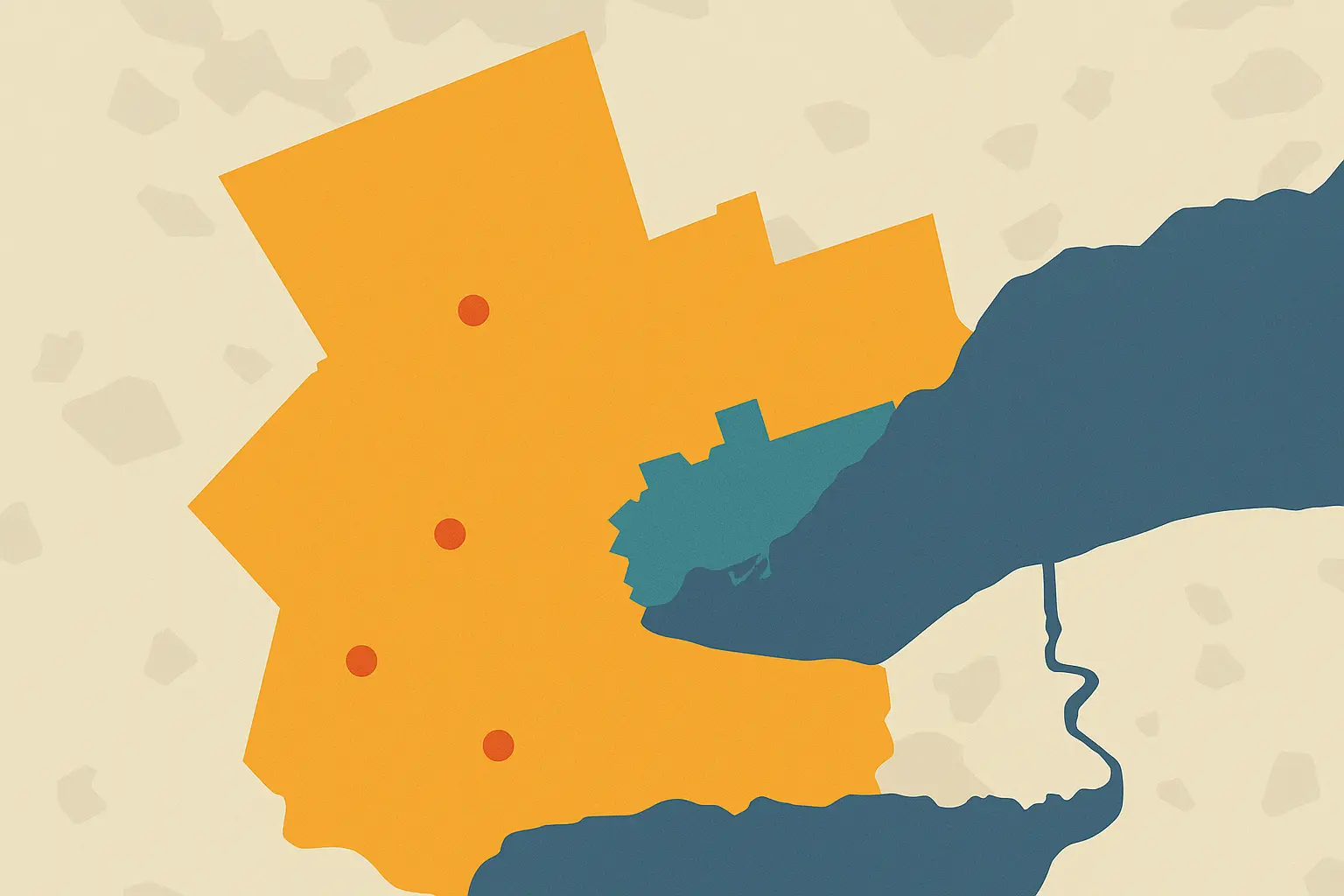
The whole region wraps around Toronto like a horseshoe, following municipal boundaries that were drawn decades before anyone thought about area codes. This creates some amusing situations—my friend’s business has a Vaughan address with a 905 number, but she’s closer to downtown Toronto than I am in Mississauga.
Here’s what the major cities look like by the numbers:
|
Major 905 Cities |
Population (Approx.) |
Regional Municipality |
|---|---|---|
|
Mississauga |
750,000 |
Peel Region |
|
Brampton |
650,000 |
Peel Region |
|
Hamilton |
580,000 |
Hamilton |
|
Markham |
350,000 |
York Region |
|
Vaughan |
330,000 |
York Region |
|
Oakville |
215,000 |
Halton Region |
|
Burlington |
185,000 |
Halton Region |
|
Richmond Hill |
200,000 |
York Region |
Population Density Creates Real Problems
Here’s what 3 million people in one area code actually means: when my neighbor tried to get a new business line last year, she had to wait three weeks because the local exchange was basically full. A single condo tower going up in downtown Mississauga can eat through hundreds of available numbers between residents, businesses, elevators, and security systems.
This density shows up in ways you wouldn’t expect. During the Rogers outage in 2022, entire sections of Brampton and Markham were basically cut off from the world. When you pack that many people into one telecommunications system, single points of failure become really obvious really fast.
Time Zone Stuff (And Why It Matters More Than You Think)
Everything in the 905 runs on Eastern Time, which sounds obvious until you’re trying to coordinate a conference call with Vancouver clients while your Hamilton supplier is running late because they forgot about the time change in November.
The real challenge isn’t knowing what time it is—it’s remembering that not everyone else does. I’ve seen Oakville businesses miss calls from Alberta because they assumed “3 PM” meant the same thing to everyone. When you’re dealing with clients across multiple time zones, learning how to forward text messages to an email address can save you from these scheduling disasters.
Business Communication Reality Check:
-
Peak calling hours hit 9-11 AM and 1-4 PM Eastern
-
Daylight saving transitions in March and November mess everyone up for a week
-
Always include “ET” in meeting invitations, even for local meetings
-
Set your automated systems to Eastern Time and stick with it
The CRTC recently announced that starting April 26, 2025, a new area code 942 will be introduced in Toronto to meet growing demand for telephone numbers, highlighting how quickly the entire GTA region keeps expanding.
How You Actually Get a Phone Number Here
Getting a 905 number isn’t as simple as calling up Bell or Rogers and asking for one. There’s a whole system behind those ten digits that most people never think about.
Every 905 number follows the (905) XXX-XXXX format, but those middle three digits aren’t random. They’re assigned to specific areas or service providers. So if you’re getting a Mississauga number, you might end up with something in the 270-279 range, while a Hamilton business could get 520-529.
The last four digits give you some flexibility—you can sometimes request specific numbers if they’re available, though good luck getting something memorable in a dense area like downtown Brampton.
|
Number Segment |
Purpose |
Example |
Assignment Method |
|---|---|---|---|
|
Area Code |
Regional identifier |
905 |
Fixed by geography |
|
Exchange Code |
Local routing |
555 |
Assigned to carriers/areas |
|
Line Number |
Individual identifier |
1234 |
Sequential or requested |
|
Full Format |
Complete number |
(905) 555-1234 |
Combined system |
If you’re setting up business systems that need to handle 905 numbers properly, understanding how to enter a phone number in international format becomes crucial for databases and automated communications.
The 1993 Split That Changed Everything
Before 1993, everyone in the GTA shared the 416 area code. Toronto, Mississauga, Hamilton, Markham—we were all 416. Then suburban growth exploded, and suddenly everyone needed multiple phone lines for fax machines, modems, and early cell phones.
By 1993, phone numbers in the 416 area code were almost entirely used up, with technology including modems, cellular phones, faxes and pagers pushing the possible number combinations to their extreme limit. Something had to give.
The solution was elegant but disruptive: split the area code. Toronto kept 416, and everything else became 905. Overnight, millions of people had to update business cards, letterheads, and phone books. My dad still complains about having to reprogram his speed dial.
The Split Created Identity Issues
What’s interesting is how the 905 became a cultural identifier. “905ers” became shorthand for suburbanites, often with a slight edge of condescension from downtown Toronto. But recent political analysis shows that the 905 region continues to be crucial in federal elections, with Conservative gains in key suburban seats around Toronto highlighting the area’s ongoing political and demographic significance.
The region’s influence extends way beyond telecommunications—it’s become the swing vote that decides Canadian elections.
We’re Running Out of Numbers (Again)
Here’s the uncomfortable truth: the 905 is heading toward the same crisis that created it in the first place. We’re running out of phone numbers, and it’s happening faster than anyone expected.
The problem isn’t just population growth—though that’s certainly part of it. It’s that everyone needs more numbers now. Your smart home has a number. Your car’s OnStar system has a number. Businesses need separate numbers for different departments, and everyone wants to keep their number when they switch carriers.
Number Portability Changed the Game
When number portability came in, it was great for consumers—you could finally ditch Rogers for Bell without losing your number. But it also meant numbers stopped getting recycled the way they used to. Numbers that would have been released back into the pool when someone moved or switched carriers now stay tied up indefinitely.
Multiple Relief Options on the Table
The telecommunications folks are looking at several solutions:
-
Overlay area codes: Add a second area code (like 289, which already exists) to the same geographic region
-
Geographic splits: Carve off parts of 905 territory for new area codes
-
Conservation measures: Stricter rules about who gets how many numbers
Each option has problems. Overlays mean everyone has to dial 10 digits for local calls (which we already do, thanks to 289). Splits mean redrawing boundaries and potentially splitting communities. Conservation measures just delay the inevitable.
When the 289 overlay was introduced in 2001, residents had to adapt to 10-digit dialing for all local calls. A similar transition would be required if additional overlay codes are implemented, affecting millions of users across the region.
Timeline Looks Tight
Current projections suggest we’ll need relief measures within the next decade. That might sound like plenty of time, but telecommunications planning works on longer timelines than your average home renovation project.
International Calls and Technical Stuff
If you’re calling a 905 number from outside Canada, you need to dial +1 (the North American country code) followed by the full 10-digit number. From most US locations, 905 numbers are treated as domestic calls, which is handy for cross-border business.
Area codes 905, 289, 365, and 742 are currently used in the Golden Horseshoe region’s North American Numbering Plan (NANP), covering the Niagara Peninsula, Hamilton, and other municipalities of Halton, Peel, York, Durham, and parts of Northumberland County but excluding Toronto.
Surviving Communication Chaos in the 905
Living and working in the 905 means dealing with some unique communication challenges that you don’t face in smaller cities. Here’s what I’ve learned actually works:
Peak Hour Reality Check
Try sending a text from Square One mall at 5 PM on a weekday. I dare you. The cell towers get absolutely slammed during rush hour when everyone’s trying to coordinate pickups, dinner plans, and “I’m stuck in traffic” messages simultaneously.
I learned this the hard way when trying to coordinate a client meeting during morning rush hour. My “running 10 minutes late” text sat in digital limbo for 20 minutes, turning a minor delay into a major miscommunication.
The 10-Digit Dialing Reality
You have to dial all 10 digits for every call now, even local ones. It’s annoying until you get used to it, then it becomes second nature. Pro tip: update all your saved contacts to include the area code, or you’ll be that person frantically trying to remember if your dentist is 905 or 289.
Business Communication Survival
If you’re running a business with multiple 905 locations, the message volume can get overwhelming fast. Teams using Slack can streamline their communications by learning how to forward text messages to a Slack channel, ensuring critical messages from clients and vendors reach the right departments instantly.
For businesses operating across multiple GTA locations, getting started with AutoForward SMS for the first time can help manage the chaos of messages coming in from Oakville clients, Hamilton suppliers, and Markham partners.
The dense 905 region generates massive SMS traffic, especially during business hours when network congestion can affect message delivery. Auto Forward SMS provides an ideal solution for managing these communication challenges by automatically forwarding text messages from your 905 numbers directly to email addresses or team collaboration platforms.
Practical Management Tips:
-
Set up SMS forwarding for critical business numbers
-
Configure
-
Configure email alerts for high-priority contacts
-
Test message delivery during peak hours (8-10 AM, 4-6 PM)
-
Establish backup communication channels
-
Monitor network congestion patterns in your specific area
-
Keep contact databases updated with 10-digit formatting
The app’s reliability proves especially important during peak hours when cellular networks in the dense 905 region may experience congestion. Advanced algorithms detect connectivity issues and retain messages until they can be successfully delivered, ensuring no critical communications get lost in this busy telecommunications environment.
What This All Means for You
The 905 area code isn’t just about phone numbers—it’s about understanding how 3+ million people stay connected across one of North America’s most sprawling suburban regions. Whether you’re new to the area or have been here for decades, knowing these details helps you navigate everything from business calls to weekend dinner plans.
Sure, we might run out of numbers in the next decade. And yes, rush hour texting can be a nightmare. The boundaries are confusing, the history is messy, and the future is uncertain.
But for all its growing pains, the 905 represents something pretty remarkable: a telecommunications system that somehow keeps millions of suburban Canadians talking to each other every single day. It’s the digital nervous system of a region that didn’t even exist as a cohesive entity 30 years ago.
Not bad for a bunch of digits that were supposed to be a temporary fix to Toronto’s phone number shortage.
Ready to streamline your 905 area code communications? Try Auto Forward SMS today and never miss another important message, even during the busiest GTA rush hours.

